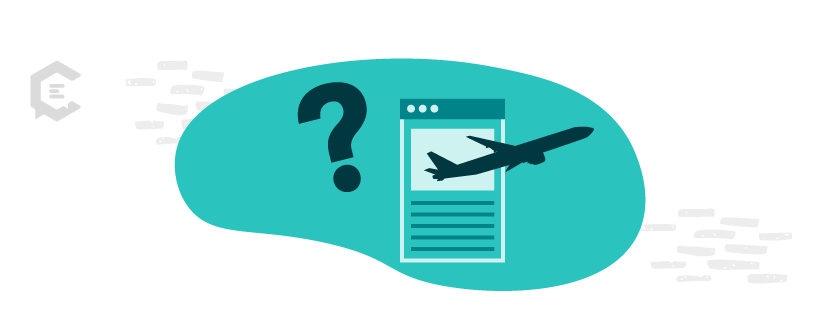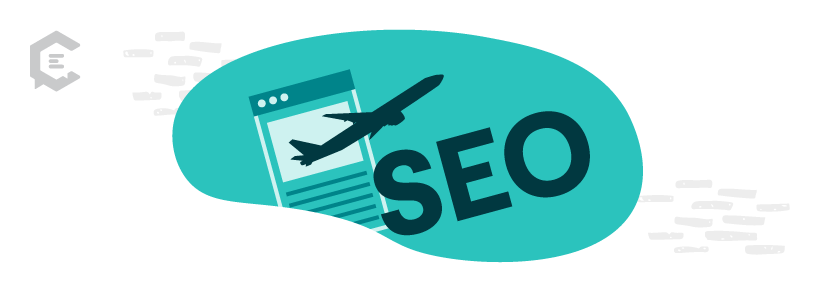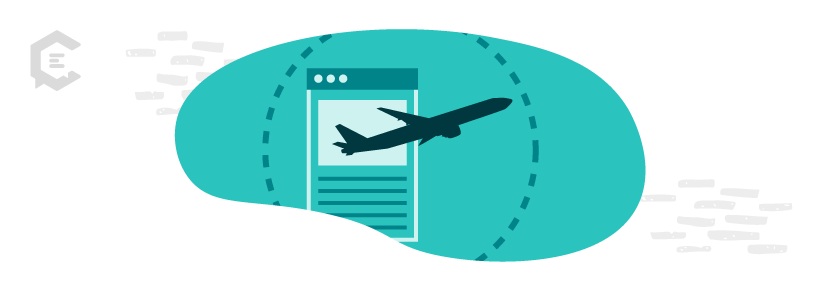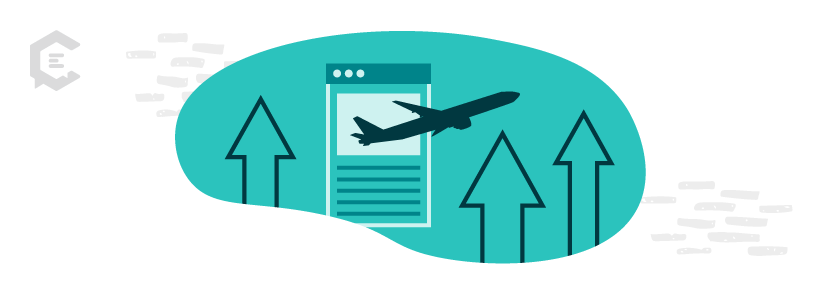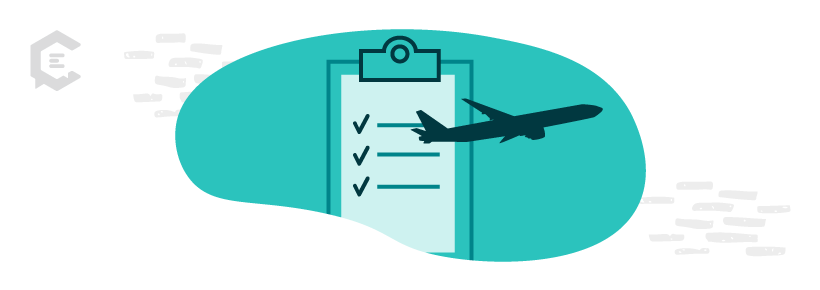Landing pages are a critical part of any online marketing campaign. They are the first thing potential customers see when they click on your ad, and they can make or break the results of your online marketing.
In order to get the most out of your landing pages, you need to optimize them for SEO. You also need to optimize for your goal, whether that’s lead generation or conversions. This post will help you hone in on your goals and learn how to get the best results from your landing pages. We will also provide you with a handy checklist to jog your memory while you work.
What is landing page optimization?
Landing page optimization is the process of making sure your landing pages are effective at achieving your desired goal.
In general, optimizing means improving something that already exists. So landing page optimization means making sure your landing pages are as effective as possible. If you’re new to designing landing pages, you might want to draft your page first and then revise it using optimization tactics. Some experienced page designers can optimize as they create. But even then, it’s a good idea to review the page for opportunities to optimize further.
There are a few different factors that you need to take into account when you’re optimizing your landing pages.
The first is SEO. You need to ensure your landing pages are keyword-rich and optimized for the search engines. If your pages aren’t popping up in search engine results, they can’t generate leads or conversions.
The second factor is your goal. What are you trying to accomplish with your landing pages? Are you looking to generate leads, or are you looking for conversions?
Understand your optimization goal
Landing pages are self-contained web pages that focus on a single objective. If you’re not sure what your goal is, take a step back and think about what you want your landing pages to achieve. One way to approach determining your goal is to consider how big a commitment you’re asking from your target audience and how far along they are in their buying journey.
If you’re selling something low-priced enough to be an impulse item — like a $15 shirt or a $39.99 collection of garden plants — then you can safely optimize for conversion into a sale on the spot.
However, if you’re asking customers to commit to a $6,000 vacation or a course that will cost $1200 and several weeks of their lives, you’ll want to optimize for leads first. That means offering something free or low-cost, like a mini-course or a downloadable ebook, to entice them to join your email list. Then, after you’ve used an email series to build a relationship with the new lead, you can send them to a second landing page optimized for conversion.
Landing page optimization for SEO
Regardless of your goal, your landing page can’t perform well if no one sees it. Search engine optimization (SEO) is the process of ensuring your site appears as high as possible in the search engine results pages to attract organic traffic.
Even if you’ll be buying ads for your landing page, SEO is important. Google considers the relevance of the landing page when it comes to ads. If Google’s bots crawl your landing page and determine that the content isn’t highly relevant to the keywords you’re advertising for, your Quality Score will suffer. And you’ll end up paying more per click.
On the other hand, if your page is highly relevant, you’ll pay less.
Research keywords
You want to optimize for the keywords your target market is most likely to type into a search engine. That means you have to think from their point of view instead of simply choosing words that describe your product or service. Your customer might not be searching for your product; especially if they don’t know it exists. Instead, they’ll be searching for the solution to a problem.
For example, suppose a company is selling ostrich feather lamps that are popular with teen and young adult women. It might make sense to optimize for the phrase “ostrich feather lampshades,” but that’s probably not a phrase their customers are typing into search engines. Instead, the customers might be looking for “lamps for girls,” “fun lamps,” “teen decorating,” or even “dorm room lighting.”
Once you’ve brainstormed a list of potential keyword phrases, you want to choose the most popular ones. Here are some resources that can help you determine which terms are getting the most search traffic:
- Google AdWords Keyword Planner (free, but you’ll need to set up a free Adwords account)
- SEMRush (free & paid options)
- Ahrefs (free trial & paid options)
Incorporate keywords on the page
Once you’ve chosen the keywords you want to optimize for, make sure that phrase —or a close variation of it — appears in as many of these key locations as you can while still having a page that feels natural and readable.
- Page URL
- Page title
- The first paragraph
- At least one heading
- Image “alt” tags
- Image titles
- Meta title & descriptions
- Sprinkled throughout the text a few times, but not “stuffing” the page
More about using keywords
Make it easy for search engines to see which page to send traffic to on your site by only having one page optimized for each keyword. You can also signal the importance of that page by linking to it from your other content, using that phrase as the anchor text for the link.
You can incorporate a secondary keyword into your page, and if it’s closely related to the first it may help boost your SEO. But don’t try to optimize your headings and title tags for more than one key phrase; you’ll lose too much readability.
Landing page optimization for lead generation
Once you’ve optimized your page for SEO, it’s time to review the content again to ensure it serves your goals.
As we mentioned earlier, if you’re looking for leads, you’ll want to optimize your landing pages to entice visitors to sign up for your free offer. Your goal is to get their contact information so you can follow up with them later.
To do this, you’ll want to make sure your offer is something they’re likely to be interested in and that you make it easy for them to sign up.
First, make sure your headline grabs their attention and speaks directly to your target audience from their point of view. Focus on the benefit to the reader. For example, instead of “Free downloadable guide to composting,” you might say, “Learn exactly how to create rich compost – for FREE!”
Then, make sure you’re offering something they’ll want. A good way to do this is by looking at what other companies in your industry are offering and seeing if you can improve on it.
Your offer should:
- Be relevant to the page topic & landing page optimization.
- Be targeted to your ideal customer.
- Include a strong call to action.
Good landing page content is easy to scan. People are very busy, and they will quickly back out of a page that looks like it will take a long time to read. So make sure to put critical information at the top of the page, and use short paragraphs broken up with lots of white space and headings. Bullet point lists also help to make your text scannable.
Try to be succinct. In general, less text is better. If you absolutely must include long, explanatory text, place it after your call to action button, and repeat the call to action every few hundred words.
Clarity is key. Stay focused on your message and on your customer. Making them the subject of nearly every sentence will help you to stay focused on the customer. For example, instead of saying, “Our guide includes tips on booking vacations on a budget,” you might say, “You’ll be able to start saving on your very next trip.”
Keep all your essential elements, including the call to action, high on the page, where you can see them without scrolling. (This is called “above the fold,” from the days when newspaper buyers could only see the top half of the paper. )
Make your images work hard. Pictures are great for breaking up space and making a page look more attractive, but they can do much more. Look for a photo with emotional resonance. Include a person if possible, and show them either suffering from a problem or enjoying the solution you offer. For instance, a picture of a compost bin or your ebook seems natural. But a picture of a person who resembles your target market happily harvesting ripe red tomatoes out of their rich, composted soil is much more compelling.
Finally, create a form that’s easy to use and doesn’t ask for unnecessary personal details. No one wants to fill out a form that requires their phone number or mailing address to download something. Only ask for what you need. Every additional question is a natural deterrent to your reader.
Optimization for conversions
Optimizing for sales includes many of the same elements as optimizing for leads. For example, you still want a compelling headline, moving images, scannable text, and a clear call to action — all above the fold.
But when you’re trying to make a sale, you may need to include a little more information. To make that work while keeping the page simple, you need excellent organization.
For instance, a carousel or slide show with thumbnails lets you offer multiple images of your product without cluttering the page. Likewise, accordion design — subheads that open up text areas when clicked — can put large amounts of supporting detail at your customer’s fingertips while keeping the page clean and simple.
Social proof reassures your potential customer that other people are happily using your product or service. Testimonials, ratings, or even a number of clients all constitute social proof. It’s a good idea to place a social proof element right before your call to action and keep it simple. A graphic can be worth a thousand words here. A seal of approval, star rating, or a carousel with testimonials from a few customers gets your message across quickly.
You can also use the space just above or below the CTA to reassure people about your return or cancellation policies.
What should people do if they have a question? The more options you give them to contact you, the better. For example, can they email, call, or chat? People don’t want to do business with companies they can’t reach if they have a problem.
Next, make sure your ordering process is straightforward and easy to use. Don’t ask for information you don’t need on the order form. For instance, you probably don’t need an address to register someone for an online course. Set up your shopping cart to accept standard payment options. Requiring people to sign up for a new online payment system will stop them in their tracks.
Finally, test your shopping cart system thoroughly. Test it on different devices, use various payment systems, and make sure everything works smoothly. If you lose a customer in a glitchy checkout process, you may never get them back.
Start optimizing your pages today
Now that you understand all the elements of an optimized landing page, it’s time to put them into practice. Landing pages are critical to a successful online marketing strategy, so make sure you’re using them effectively.
Check out our landing page optimization checklist for a step-by-step guide to creating high-converting pages. And if you need help putting everything together, remember that ClearVoice can help you with all aspects of your content marketing, from strategy to copywriting.
The ClearVoice Landing Page Optimization Checklist:
Optimize for SEO
- Ensure your primary keyword is a phrase your customers are likely to search for.
- Research your possible keywords to ensure they have good search traffic.
- No other pages on the site are optimized for this keyword.
- Keywords appear in:
- Page URL
- Page title
- First paragraph
- At least one heading
- Image “alt” tags
- Image titles
- Meta title & descriptions
- Sprinkled throughout the text a few times without “stuffing” the page or feeling unnatural
Optimize for leads
- The headline speaks compellingly to your audience.
- Images have an emotional component.
- Text is brief and scannable.
- Focus on the customer, using “you” language and stressing benefits rather than features.
- Offer is relevant to keywords.
- The offer is highly appealing to your target market.
- The call to action (CTA) is clear and easy to follow.
- Essential elements are “above the fold” and well-organized.
- The form is easy to use and pared down to only the info you need.
- The entire page is focused firmly on a single sales message.
Optimize for conversions
- The headline speaks compellingly to your audience.
- Images have an emotional component.
- Text is brief and scannable.
- Focus on the customer, using “you” language and stressing benefits rather than features.
- Use carousels or accordions to maximize information and minimize page clutter.
- Include social proof before the CTA.
- CTA is clear and easy to follow.
- State your return or cancellation policies in a positive way near the CTA.
- Essential elements are “above the fold” and well-organized.
- The order form is easy to use and pared down to only the info you need.
- Give people a way to ask questions.
- Accept common payment methods.
- Test the checkout process on several devices.
- The entire page is focused firmly on a single sales message.
